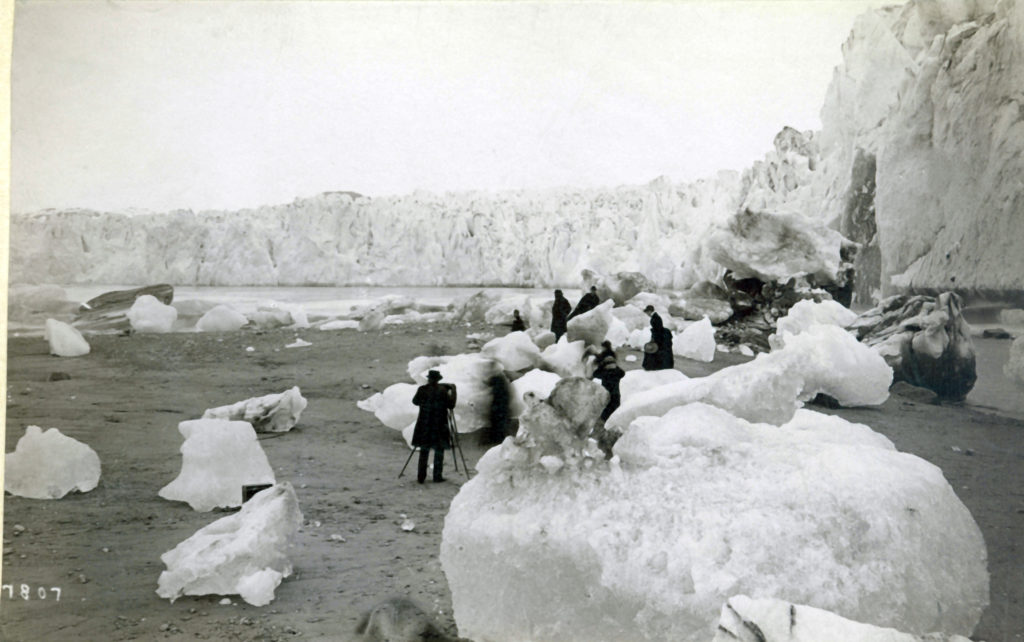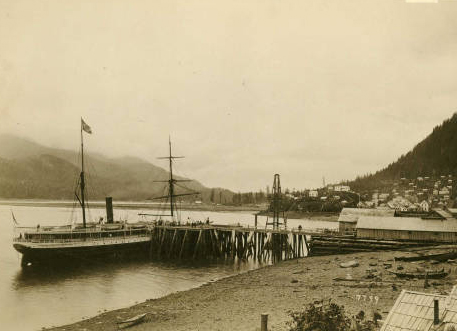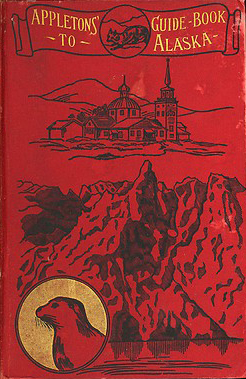Scidmore, National Geographic Female Explorer

Early tourists at Muir Glacier (Source: Alaska State Library and Archives)
Eliza Scidmore is known largely for her role as the earliest visionary of Washington’s cherry trees. She was also an intrepid traveler. And the National Geographic Society considers her its first female explorer.
The Geographic recently spotlighted some of its pioneering women on its blog. I kicked off the series with an article on Eliza Scidmore.
She became a member of National Geographic in 1890, two years after its founding. The Society’s leaders elected her corresponding secretary in 1892, making her the first female board member. She won the scientists’ respect especially for her writings on Alaska, a place not yet known to most Americans.
The United States had owned Alaska only 16 years when Scidmore went there for the first time in the summer of 1883. Mail steamers, which made circuits up and down the Inside Passage, offered the only means of getting to and from Alaska.
Scidmore traveled aboard the Idaho, in what became a historic journey. Here’s a picture of what may have been her ship (there were several steamers of that name over the years).

Steamship “Idaho,” at dock in Juneau in 1887 (Source: Alaska State Library and Archives)
Off the Known Route
Scidmore, already a young newspaper correspondent for a number of years, reported on the month-long journey. A path-breaking incident occurred when the Idaho ventured off the known route and sailed into the upper reaches of Glacier Bay.
The captain, James Carroll, had heard stories of the bay’s magnificent glaciers from John Muir, who had explored the area by canoe a few years earlier.
Curious about the reports, Carroll decided to push north into the icy, uncharted waters in hopes of seeing the glaciers. He guided the ship to about an eighth of a mile from the front of the massive glacier he later named for John Muir.
Eliza Scidmore was on board. She and her fellow passengers became the first tourists to visit Glacier Bay.
Here’s a video I made of that historic voyage.
Scidmore repeated the journey the following summer, again writing about the trip. She expanded her newspaper dispatches into a book-length narrative of her travels, Alaska: Its Southern Coast and the Sitkan Archipelago.
Published in 1885, the book is now considered the first guidebook on Alaska. It became popular when an Alaska cruise industry sprang up at the end of the 19th century.
 Altogether, Scidmore visited Alaska a half-dozen times. She updated and expanded her book into the comprehensive Appleton’s Guide-Book to Alaska, published first in 1893.
Altogether, Scidmore visited Alaska a half-dozen times. She updated and expanded her book into the comprehensive Appleton’s Guide-Book to Alaska, published first in 1893.
Today she has two major landmarks in Alaska named for her: Mount Ruhamah and Scidmore Glacier and Bay.
Early ‘National Geographic’ Writer
Among the publications Scidmore wrote for in her long journalistic career was the fledgling National Geographic.
In a 25-year affiliation with the National Geographic Society, she published about a dozen articles in the magazine, as well as photographs. Besides contributing photos of her own, she helped the editor acquire images from many other sources in the Far East.
For National Geographic, Scidmore’s wrote about a deadly “earthquake wave” that hit the northeast coast of Japan in June 1896, killing 27,000 people and wiping out entire fishing villages.
In her article, Scidmore introduced American readers to a Japanese word that we now use commonly in English:
[…] Over the 25 years spent writing and taking photographs for National Geographic, Scidmore shared more than a dozen articles including one about a deadly tidal wave in Japan called a tsunami. This was a new word for Americans who knew nothing of the phenomenon in June 1896 when it ripped through Sanriku. The 8.5 magnitude earthquake caused two tsunami’s whose waves reached 125 feet and remained the highest on record until 2011. It killed 22,000 people. […]